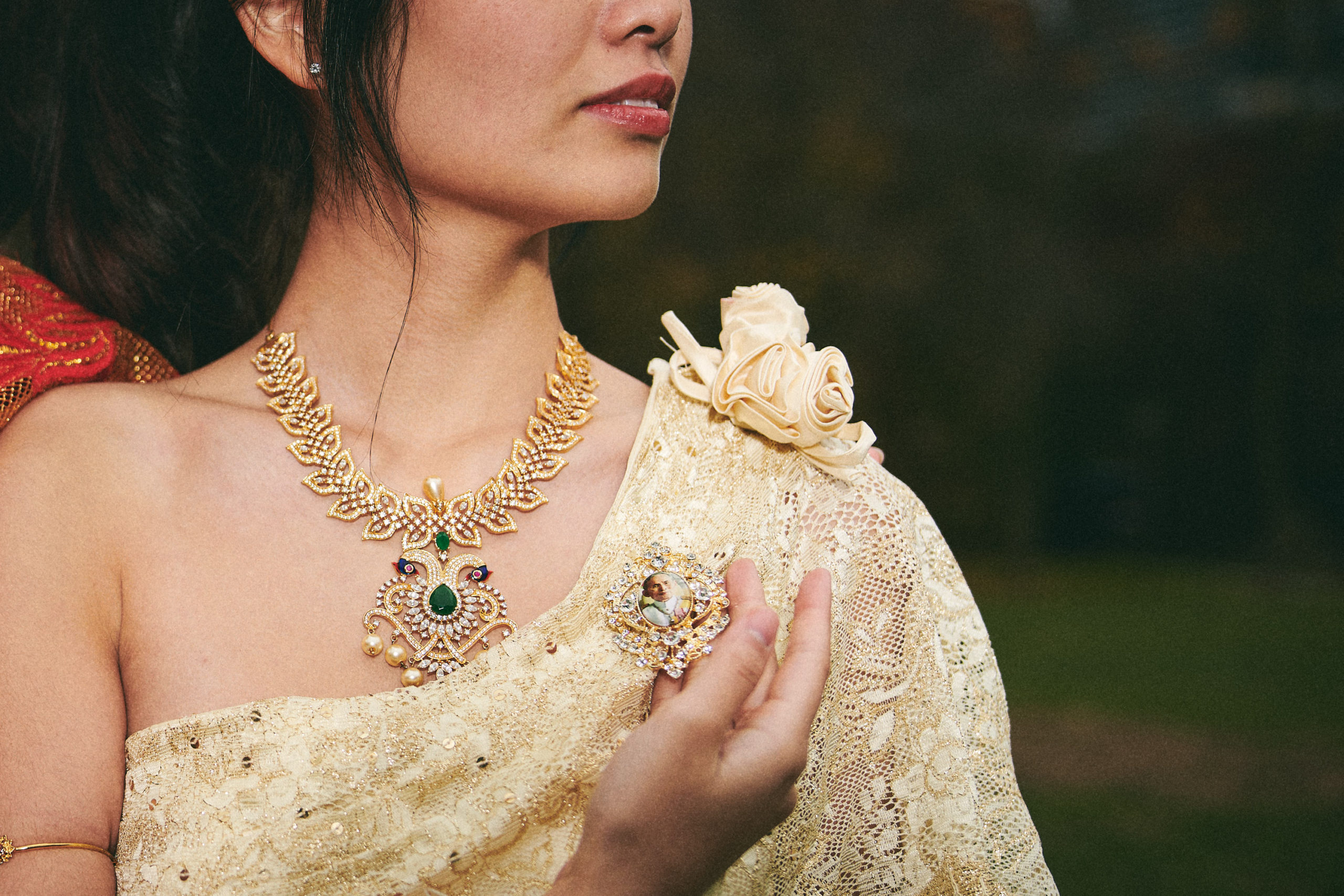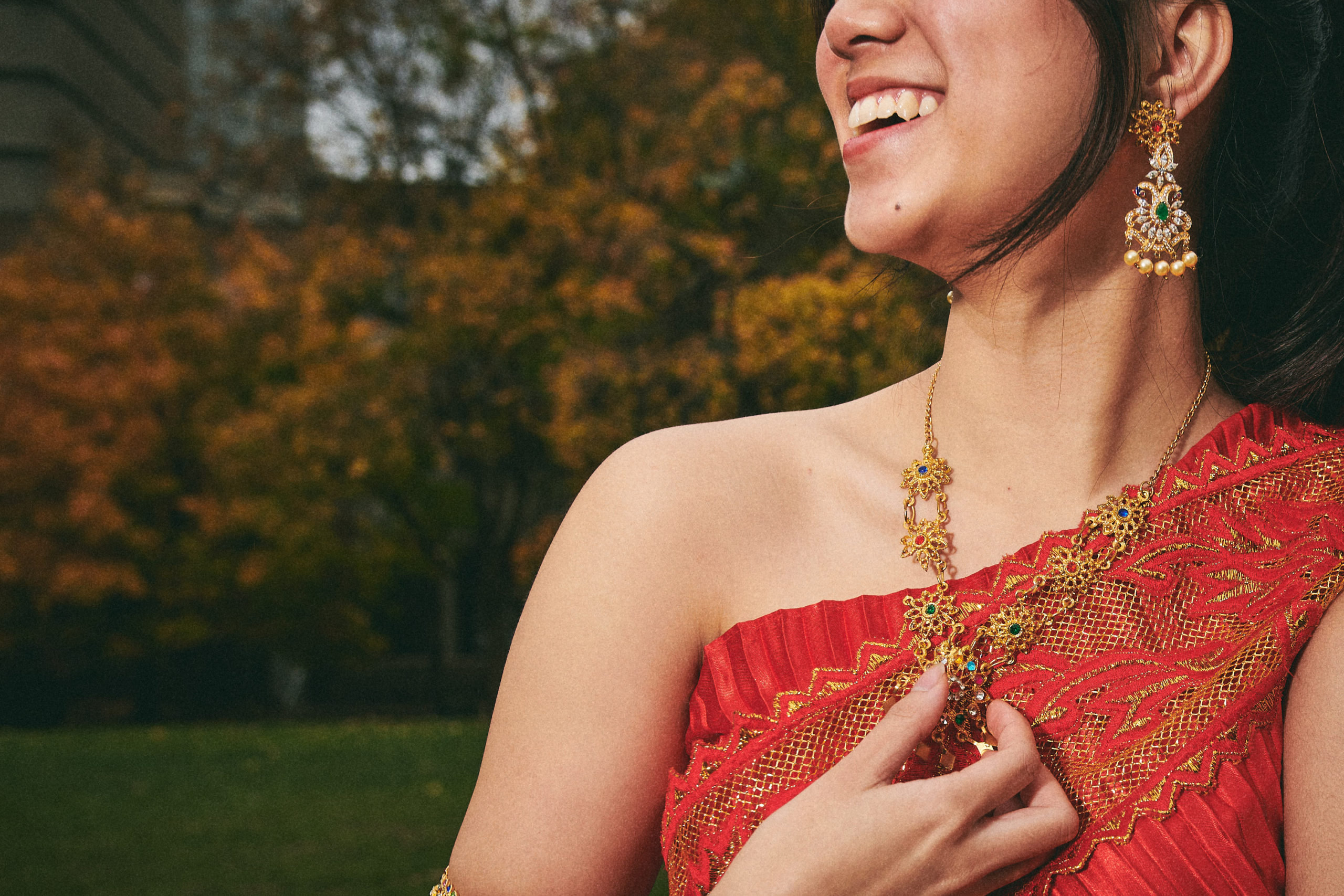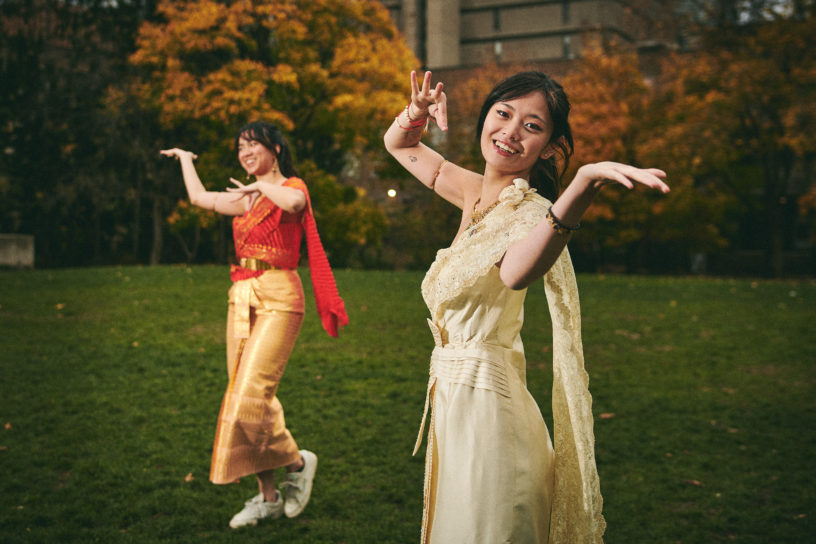By Teresa Valenton
Faint steps of young women graced the hardwood floors of a quaint living room in Toronto. Hollow sounds of traditional Thai instruments spilled out the room’s radio speakers while mothers instructed their daughters to follow their dance movements. These rigid physical gestures are small in theory but perfection and precision remained sought after.
It is through dance that these intergenerational communities found a middle ground to a growing cultural divide. For some Thai-Canadian students at Toronto Metropolitan University, their only exposure to this community is through these dance practices where tradition and identity intersect.
Shoulders continued to bump one another and chatter grew louder through commands. Dressed in cotton t-shirts and sweatpants, with ponytails tied up high, each daughter sweat profusely to perfect each dance.
For Emalita Natividad, a third-year RTA new media student and Jainna Fernandez, a second-year language and intercultural relations student, this is what their weekends have looked like growing up together since they were around three or four years old.
Recognized by the United Nations Educational, Scientific and Cultural Organization Heritage as Khon and Lakhon Nai, these two dance genres tell religious stories and folklore that date back hundreds of years. Although there are more genres, their names have gone untranslated into the English language. With elaborate headdresses, costumes and music, each dance performance ties deeply into Thailand’s unique history as the only Southeast Asian country to avoid colonization.
“I did not grow up with the same Thai values that she had, so we tended to clash”
Thiti Jamkajornkeiat, assistant professor in global Southeast Asian studies at the University of Victoria, said in terms of geopolitics and history, Thai communities in North America are different from that of other Southeast Asian countries.
“Diaspora and migration to North America is always related to politics,” he said. “The Thai community is an outlier in this history of migration…The Thai diasporic community in North America were not those who suffered from [United States] colonial or neo-colonial relationships in the first place.”
He said unlike the way the Philippines or Vietnam suffered from these relations, “Thailand was complicit in and benefitted from American expansion during the Cold War.”
According to the Government of Canada’s 2021 census, 22,270 people of ethnic or cultural Thai origins live in Canada. It is estimated that over 17,000 Canadians live in Thailand.
For one Thai immigrant living in Toronto, preserving a piece of the motherland meant reconnecting with the lessons from her youth. Somjai Srijan, a mother who began to teach various Thai dance forms around 2007, said she wanted her children to learn more about their culture. Srijan was first exposed to the dances as a young schoolgirl in Thailand where she learned the basics as a subject run by the school.
Srijan had many aspirations for her children to learn more about their Thai heritage. Upon her arrival in October 1995, she found that a cultural divide was inevitable.
“I want them to learn everything they could about Thai culture,” said Srijan. “At least when they go to Thailand they know the dances and at the same time have a community here.”

Despite Srijan’s hopes of fostering a sense of Thai identity and community in her children, embracing her heritage has not always been straightforward for her daughter.
Growing up, Fernandez often found herself caught between cultures, feeling the weight of her mother’s desire for connection. Often questioning the validity of her Thai identity as a Filipina and Canadian as well, concerns about all three cultures was prominent in her upbringing.
“I am still trying to figure out the balance of it all. For my Thai side, I only have my mom since she is the only Thai person that lives with us in the family right now,” she began. “It is already hard for me to sometimes speak and understand her. I did not grow up with the same Thai values that she had, so we tended to clash.”
Regardless of the divide, the mother and daughter duo found consolation in Thai dances which withstood the growing intercultural and generational differences in their family. From the age of three years old and onwards, Fernandez dedicated a few days each week to practice.
Both Fernandez and Natividad took on these dances as a major influence in their childhoods and together, they found both comfort and pride in keeping these traditions alive, creating a space where they could explore their heritage side-by-side.
“My mom pushed me to do Thai dances because she found this whole community in Toronto. During festivals, Thai elders or different women in the community group us together to teach us,” said Natividad. “It just became a whole community gathering and I found a lot of good friends from it.”
In the early morning before performing in Toronto in 2014, Natividad and Fernandez were two of many young women who found themselves in Thai temples preparing for the King’s birthday. According to Diversity Atlas, the national holiday is celebrated annually on July 28 to commemorate the King of Thailand, Vajiralongkorn, who was born in 1952. The holiday is celebrated with many ceremonies and is a time for Thai people to celebrate their monarchy.
“I want them to learn everything they could about Thai culture”
Back at a Thai temple in Toronto, vibrant fabrics reflected the stories of the country. With makeup brushes spread over white counters and hair products aerating the room, the visual component of Thai dances came to life. Adorned with gold accents, headpieces and crowns, Natividad and Fernandez carefully prepared themselves to put on a performance authentic to their adverse upbringings.
Evidently, the preservation of Thai dance is not only a personal journey, but also a communal one, essential for the continuity of heritage in Canada, Natividad said. When asked about pursuing these traditions for younger generations, she commented, “I feel like there’s something special about the generations of women teaching their younger daughters Thai dance.”
As the Thai community in Toronto continues to adapt their migration experiences to Canadian culture, the validity of cultural adaptability is pushed further.
Jamkajornkeiat reiterated that, “There is something absolute about certain essences of culture that one can claim. It is very dangerous to use in this time and space where there is a rise of fascism and claims of authenticity where there is none.”
For Natividad and Fernandez, their efforts to pursue Thai dances represented a commitment to preserving cultural identity in a foreign land.

“It was very hard to be open about Thai dancing, especially since we have a very small community. I was only able to perform only one to three times a year,” explained Fernandez. “I was very scared to talk about my Thai identity or exposing that part of me to others.”
Although diasporas are often questioned when making an effort to reconnect with their heritage, the two found that each performance further strengthened their community ties.
“I tend to see every performance of culture in its historical context, whether it is in Thailand or whether it’s in Canada and see what are the meanings that have been created from its renewal or reenactment of culture,” explained Jamkajornkeiat.
Now onstage at the temple, the daughters of the Thai community got in place to perform. Surrounded by Buddhas, monks and money trees on stage, they stood poised, ready to bring their heritage onto Canadian soil. Water flowed through the background, music played through the speakers and flower petals scattered the stage. Taking one deep breath before gracefully walking into position, Fernandez and Natividad stepped forward.











Leave a Reply